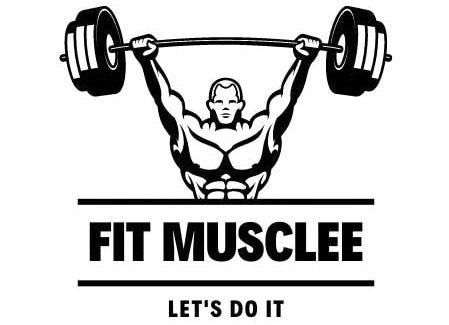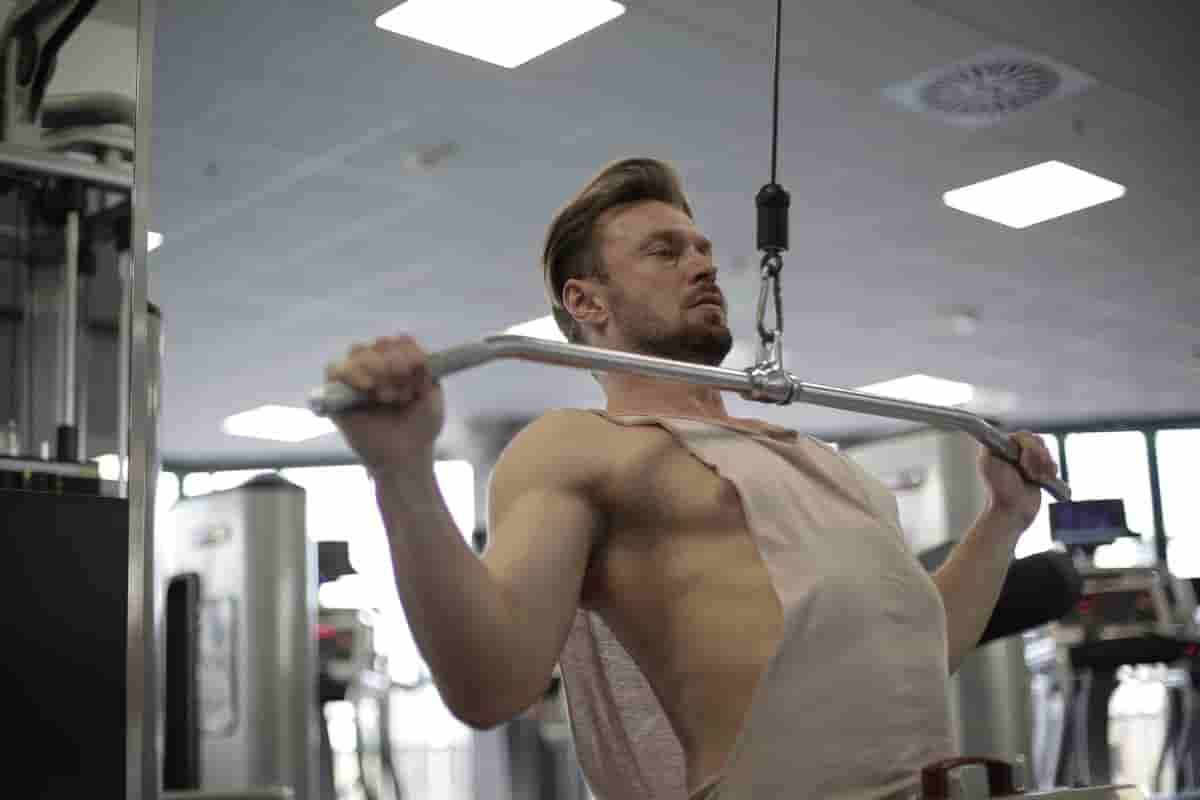Here is your complete guide to the lat pulldown bar.
Introduction to Lat Pulldown Bar?
The lat pulldown bar is a fundamental piece of fitness equipment designed to help target and develop your back muscles, especially the latissimus dorsi (or lats). Whether you’re a beginner or an advanced athlete, understanding how to choose, use, and maintain the perfect lat pulldown bar can improve your exercise routine and back strength. This comprehensive guide covers everything—from the types and benefits of a lat pulldown bar to grip variations, buying tips, and maintenance.
A lat pulldown bar is a specialized bar attachment used with cable machines, primarily targeting the latissimus dorsi, the broadest muscles in the back. It mimics pull-up movements but allows for adjustable resistance and a variety of grip options. You can find it in most commercial and home gyms, integral for back workouts.
Using a lat pulldown bar consistently helps enhance upper body strength, improve posture, and build that desirable V-shaped back. This versatile bar is critical both for bodybuilding and functional strength training.
Types of Lat Pulldown Bars and Key Features
| Bar Type | Features | Best For |
|---|---|---|
| Angled Lat Bar | 45° bends, knurled, 36-48in length | Targeting lats with comfort |
| Straight Lat Bar | No bends, shorter length, knurled | Low rows, curls, triceps |
| Multi-Grip Bar | Multiple handle positions | Versatility and ergonomics |
| Pro-Style Bar | Fixed ends/handles | Neutral grip, low rows |
Anatomy of a Lat Pulldown Bar
A lat pulldown bar is typically made from high-strength steel or chrome-plated metal for durability. Most bars range from 36 to 48 inches in length, allowing for varied grip widths.
Key construction features include:
- Knurling: Textured grip sections to prevent slippage.
- Rotating ends: Some bars have swivel ends to reduce wrist strain while pulling.
- Rubber or silicone grips: Offered on some models for added comfort and secure hold.
The bar’s weight and thickness also influence its feel—thicker bars may be harder to grip but provide more grip strength training.
Benefits of Using a Lat Pulldown Bar
Using a lat pulldown bar offers several fitness benefits:
- Muscle targeting: Emphasizes the lats, biceps, forearms, and trapezius.
- Posture improvement: Strengthens back muscles to balance upper body posture.
- Injury prevention: Strengthening the back reduces risk of shoulder and neck injuries.
- Functional strength: Helps athletes in swimming, gymnastics, wrestling, and more.
Top 5 Benefits
- Builds a broader, stronger back.
- Enhances pulling power and grip strength.
- Improves shoulder joint stability.
- Offers multiple grip options targeting different muscles.
- Versatile accessory suitable for all fitness levels.
Types of Lat Pulldown Bars Explained
There are several types of lat pulldown bars, each offering unique advantages:
Angled vs. Straight Bars
- Angled Bars: Feature 45° bends that reduce wrist strain and improve grip comfort. Ideal for targeting lats while minimizing elbow and wrist stress.
- Straight Bars: Best for exercises like curls and rows, focusing more on arm muscles and rhomboids.
Multi-Grip Bars
These have several handle positions, allowing wide, neutral, and close grips for varied muscle activation. Great for ergonomic versatility.
Specialty Bars
- V-Bar: Focuses on the mid-back and inner lats with a neutral grip.
- Triangle Bar: Compact and aimed at lower lat isolation and reduces wrist strain.
- Rubber vs Steel Grip: Rubber grips add comfort and prevent slipping, while steel grips are more durable.
| Feature | Angled | Straight | Multi-Grip | Pro-Style |
|---|---|---|---|---|
| Wrist Comfort | High | Low | High | Medium |
| Versatility | Medium | High | Very High | Medium |
| Muscle Focus | Lats | Biceps | Balanced | Rhomboids |
How to Use a Lat Pulldown Bar: Step-by-Step Guide
Setting Up
- Attach your chosen lat pulldown bar to the cable machine.
- Adjust the seat and thigh pads so your thighs are secured.
- Select an appropriate weight that challenges you but allows proper form.
Execution
- Grab the bar with your preferred grip (wide, normal, or close).
- Sit upright with chest lifted and shoulders back.
- Pull the bar down toward your upper chest, focusing on engaging your lats.
- Keep elbows pointed down and close to your torso.
- Slowly return to the starting position with arms fully extended.
Common Mistakes & Corrections
| Mistake | Correction |
|---|---|
| Leaning back | Remain mostly upright |
| Rushing reps | Perform slow, controlled reps |
| Wrong grip width | Keep elbows stacked under wrists |
Focus on deliberate, muscle-focused movements rather than momentum.
Lat Pulldown Bar Exercises & Grip Variations
Using different grips on the lat pulldown bar targets muscles in slightly different ways.
Grip Variations
- Wide Grip: Emphasizes upper lats and teres major muscles, creating a V-shaped back.
- Close Grip: Increases biceps involvement.
- Reverse (Supinated) Grip: Engages biceps and lower traps more intensely.
- Neutral Grip: Often used with specialty bars like v-bars, reduces joint stress.
| Grip Type | Main Muscles Worked | Notes |
|---|---|---|
| Wide | Lats, teres major | V-taper appearance |
| Reverse | Lats, lower traps, biceps | Increased bicep activation |
| Neutral | Lats, mid-traps | Reduces wrist/elbow discomfort |
| Close | Lats, biceps | Greater arm involvement |
Recommended Sets and Reps
- For muscle growth: 3-4 sets of 8-12 reps.
- For endurance: 3 sets of 12-15 reps.
- For strength: 4-5 sets of 4-6 reps.
Who Should Use a Lat Pulldown Bar?
The lat pulldown bar is suitable for:
- Beginners: Provides assisted pull motions, building foundational back strength.
- Advanced Lifters: Versatile enough for heavy lifting and grip variations.
- Injury Recovery: Controlled movements help strengthen without stress.
- Athletes & Functional Fitness Enthusiasts: Improves pulling power, posture, and back muscle function essential for many sports.
Buying Guide: How to Choose the Best Lat Pulldown Bar
Key factors when selecting your lat pulldown bar:
- Length and Diameter: Longer bars allow a wider grip; diameter affects grip comfort.
- Grip Type: Knurled steel provides secure grip; rubber adds comfort.
- Attachment Style: Ensure compatibility with your cable machine or home gym.
- Rotation: Rotating ends can reduce wrist strain.
- Brand and Price: Popular brands include REP Fitness, Synergee, Titan Fitness, and CAP, each offering different price points and features.
| Brand | Model | Key Features | Best For |
|---|---|---|---|
| REP | 48″ Solid Lat Bar | Ergonomic, smooth rotation | Most users |
| Synergee | Pro-Style | Neutral grip, durability | Joint comfort |
| Titan | Multi-Grip Attachment | Multi-handle, powder coat | Versatility |
| CAP | Deluxe LAT Bar | Rubber grips, lightweight | Beginners |
| Bells | Steel Lat Bar | Classic, robust | Home gyms |
Maintenance and Care for Lat Pulldown Bars
Maintaining your bar extends its lifespan and keeps workouts safe:
- Cleaning: Wipe the bar regularly with a mild soap solution and dry thoroughly.
- Inspect Bolts and Attachments: Check for any loose bolts or signs of wear.
- Lubricate Rotating Parts: Use lubricant on swivels or rotating ends.
- Replace Worn Grips: Rubber grips or knurling may wear over time — replace or refurbish as needed.
- Safety Checks: Before every workout, ensure the bar and attachment points are secure and cables are undamaged.
Home Gym Setup: Maximizing Results with a Lat Pulldown Bar
For home gyms, incorporating a lat pulldown bar requires proper setup:
- Choose a compatible cable machine or multi-gym station.
- Allocate enough space for full range of motion.
- Combine with complementary equipment: dumbbells, resistance bands, and rowing machines.
- Incorporate lat pulldown bar exercises into your routine at least twice a week for optimal back development.
Common Mistakes & Troubleshooting
Avoid these common pitfalls:
- Incorrect Posture: Leaning too far back or arching the lower back excessively.
- Improper Grip: Too wide or too narrow, leading to poor muscle engagement or strain.
- Overloading Weight: Choosing weights beyond your current capacity causes compensations.
- Uneven Pulls: Can indicate imbalanced strength—focus on symmetrical movement.
- Cable Issues: Regularly inspect cables for wear and best performance.
Read Also: Creatine vs BCAA.
FAQs About Lat Pulldown Bar
What is the best lat pulldown bar for beginners?
Look for a mid-length, angled bar with rubber grips to reduce wrist strain and provide comfort.
Read Also: Folding Squat Rack.
Can I use a lat pulldown bar for exercises other than lat pulldowns?
Yes, you can perform low rows, tricep pushdowns, curls, and upright rows depending on your bar type.
Read Also: Delayed Chest Pain After Exercise.
How do I choose the right grip width for lat pulldown?
Start with hands just wider than shoulder-width to target the lats effectively; adjust based on comfort and goals.
Read Also: Pre Workout Without Beta Alanine.
What’s the difference between straight and angled lat bars?
Angled bars reduce wrist/elbow strain, while straight bars favor arm-focused exercises and rows.
Read Also: Chest Workout With Bands.
How often should I clean and inspect my lat pulldown bar?
Clean after each use if possible; perform detailed inspections weekly or monthly depending on usage frequency.
Read Also: Yoga Discipline Sanskrit.
Should I go heavy or light with lat pulldown bar exercises?
Focus on controlled form first; increase weight progressively for strength or stick with lighter, higher reps for endurance.
Read Also: Exercise Equipment for Chest.
Conclusion
A good lat pulldown bar is a versatile and essential tool for building a stronger, wider back while improving posture and upper body function. Whether in a professional gym or home setup, it offers countless grip and exercise variations suitable for all fitness levels. Choosing the right bar, maintaining it properly, and practicing good form will maximize your training benefits and reduce injury risk. Incorporate this staple accessory into your routine, and reap the rewards of a well-developed back and enhanced athletic performance.
Read Also: Machine for Glutes.
References and Resources Used in This Article:
- High-Density Electromyography Excitation in Front vs. Back Lat Pull.
- Cable Lat Pulldown – Instructions, Information & Alternatives.
- The Biomechanics of the Lat Pulldown: Muscles Worked, Grips, and More.
- 12 Lat Pulldown Benefits: Power Up Your Back Strength.
- Master The Lat Pulldown: Benefits, Form and Grip Variations.
- A Comparative Analysis and Technique of the Lat Pull-down – LWW.
- What is the Best Lat Pull Down Variation?
- Variations in muscle activation levels during traditional latissimus dorsi exercises.

